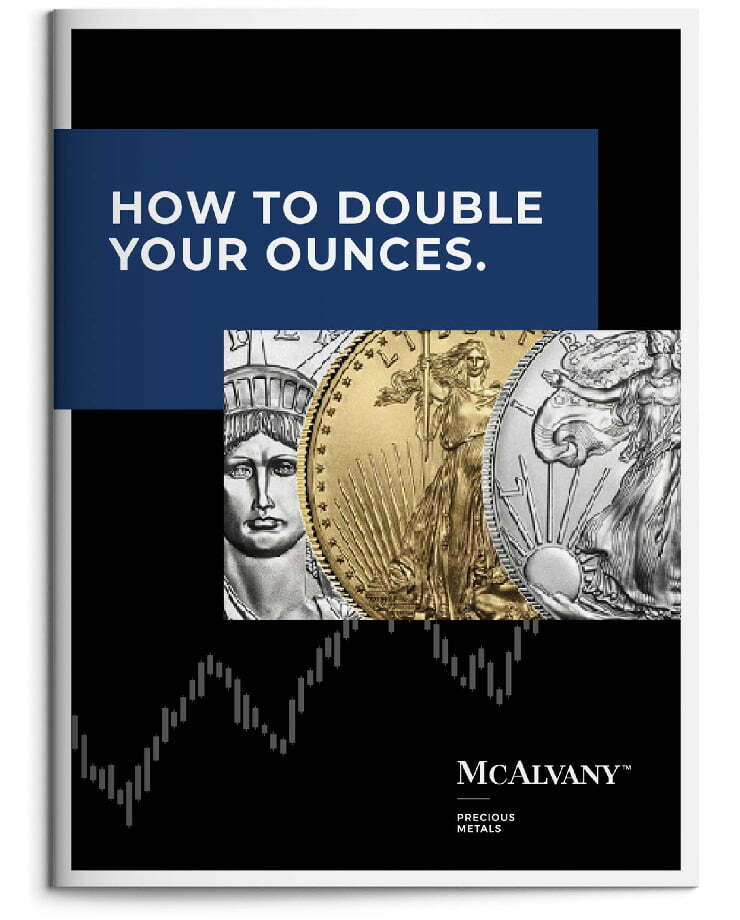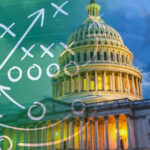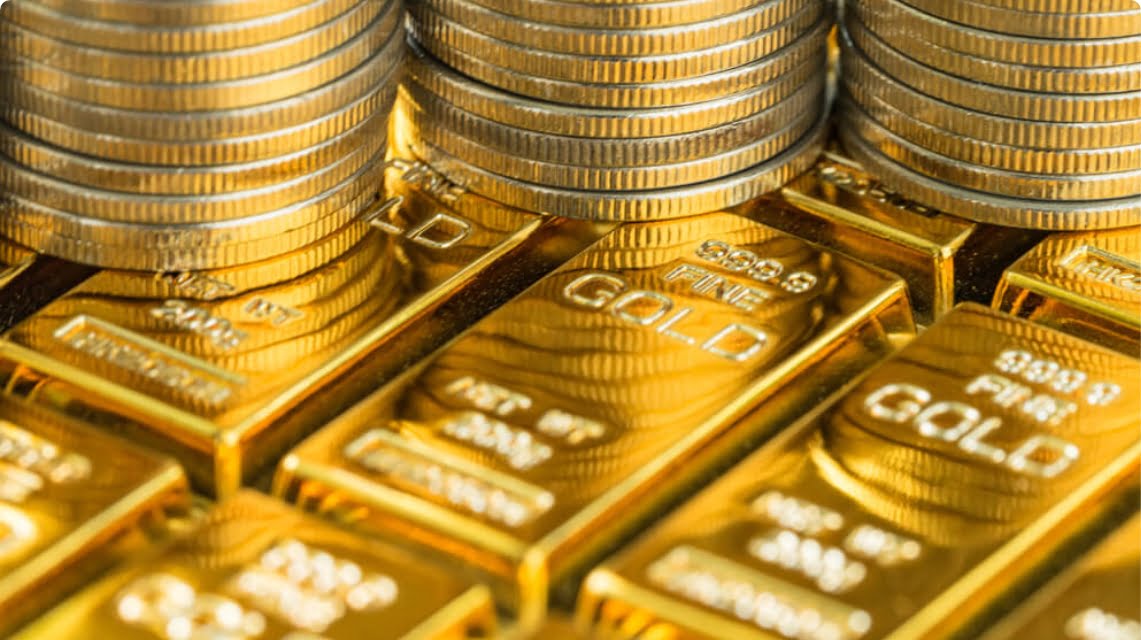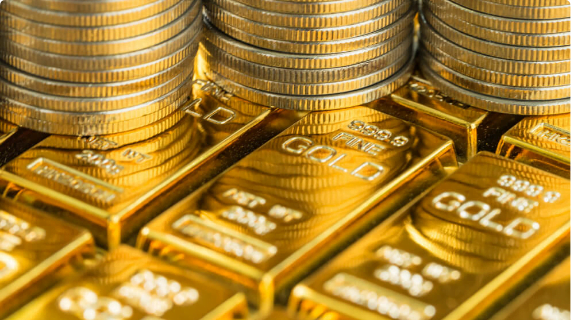Precious Metals Party Time
This week, HAI will be short and to the point. Recent HAI’s have suggested that the Trump administration, given national security necessity, looks very likely to attempt to pursue policy prerogatives that prioritize addressing our most critical, long-ignored national vulnerabilities. Those critical priorities include the revitalization and reshoring of America’s severely atrophied manufacturing base and a significant reduction in the national debt-to-GDP ratio.
For investors, that means the likely consequence of a considerably weakened U.S. dollar, a yield curve that is likely to be substantially suppressed, and an economy that authorities are likely to run hot in order to inflate away the net present value of otherwise debilitating debt obligations.
Up until this week, it appeared as if the one body standing in the way of a full-on Trump administration “inflate-the-debt-away playbook” was Jay Powell and the Fed’s FOMC committee refusing to cut rates under heavy administration pressure.
To review, HAI has long stressed that the Federal Reserve is trapped between both an inflation problem and a serious federal government debt and deficit problem. The Fed seemingly can’t raise rates further to effectively fight inflation because of the resulting increase in interest expenses that would accelerate a debt spiral. On the other hand, the Fed can’t cut rates to ease the debt and deficit problem without stoking the inflation fire.
In highly anticipated remarks this week at the Jackson Hole Economic Policy Symposium on Friday, however, Federal Reserve Chair Jerome Powell seemed to offer an indication of an important Fed policy pivot towards the direction of lower U.S. interest rates—and, by extension, perhaps an implicit tolerance for higher inflation.
As the New York Times put it, Powell “used a closely watched speech to send his strongest signal yet that the central bank is preparing to soon restart interest rate cuts, highlighting the labor market’s vulnerabilities even as inflation accelerates.”
As Powell put it, “The balance of risks appears to be shifting,” and that “shifting balance of risks may warrant adjusting our policy stance.”
In HAI‘s view, Powell’s speech was very important. The Fed is the official organization charged with the mandate of price stability. Despite that, they have significantly overshot the 2% inflation target for what is now 53 consecutive months, or four years and five months. Given that context, the idea that Fed chair Powell would signal a policy change towards a renewed rate cut cycle “even as inflation accelerates” is, in HAI‘s view, a very strong indication that inflating the debt away is now a national security imperative and, as a result, the Fed’s new shadow mandate—whether Powell likes it or not.
To be clear, in HAI‘s view, the message from Powell’s speech indicates that the Fed will soon cut rates because, while risks to already elevated inflation are tilted further to the upside and risks to employment are tilted to the downside, the Fed will now seemingly pay more attention to the downside risks of employment than upside risks of inflation.
In HAI‘s view, that subtle policy shift to elevate the employment mandate over the inflation mandate is entirely about the fiscal crisis and the fact that “true interest expense” (entitlements + interest expense + veterans affairs) is already over 100% of record-high federal tax receipts and, crucially, is growing faster than those tax receipts.
Given that reality, rate cuts that stimulate employment, the economy, and (by extension) tax receipts while letting higher inflation reduce the net present value of the debt burden—is very helpful. By contrast, higher rates that hurt employment, the economy, and (by extension) tax receipts—are very detrimental to the fiscal crisis.
The bottom line is that, as of Friday, Powell and the Fed appear to have just jumped onto the inflate-the-debt-away bandwagon. The new reality is that cutting interest rates is a must—but not for maximum employment, nor for price stability. It’s a must because the U.S. fiscal crisis demands the cuts.
Before Powell’s speech, market-based odds of a September rate cut by the Fed were below 80%. After Powell’s speech, odds for a cut spiked to essentially 100%.
Friday’s market reaction to slaughter the dollar, bid up stocks, and boost precious metals indicates that Western markets are reaching a recognition point. These are not normal times. We’re not in Kansas anymore. We’re in a Sovereign debt crisis and the government is pursuing a run-it-hot, inflate-the-debt-away policy playbook imperative. Apparently, Jay Powell and the Fed just got on board.
While this certainly might play well for major stock market indexes in the near-term, in HAI‘s view, the real generational opportunity for investors is to own gold and related assets now, as the post-1971 dollar based global system redefines itself amid an inflationary Western sovereign debt crisis.
To conceptualize the opportunity, consider that gold (the early bull market leader) is already well into all-time high territory with significant further upside likely to come, while both the precious metals miners and silver are just now starting to strongly outperform gold with sights on new all-time highs of their own.
In fact, silver has now spent over two months comfortably over $36/oz. Historically, silver has only been above that level twice before in the two prior major precious metals bull markets. Silver closed above $36/oz for 17 weeks in 2011, and for five weeks in 1980. After both of those short windows, the upside surge reached the $48 to $50 range almost immediately. In the current set-up, HAI believes another test of $50/oz silver is likely—soon.
Furthermore, given the current fundamental setup, HAI believes an even further move higher for silver and the precious metals mining stocks (outperforming gold) well into new all-time high territory is also an entirely reasonable expectation.
Again, so far, the Western investor has barely begun entering the precious metals (PM) sector. This week, however, Jay Powell just rolled out the red carpet for much more Western investor participation. As HAI said last week, historically, with the Western investor engaged, precious metals bull markets become quite the spectacle. Consequently, in HAI‘s view, it’s about time to sit back and enjoy the show. To be clear, if the Fed follows through, the market will begin factoring an easier-money environment into expectations. Given the current context, that likely directly translates to some serious PM party time!
Weekly performance: The S&P 500 was up 0.27%. Gold was up 1.02%, silver gained 2.44%, platinum gained 1.28%, and palladium was up 1.96%. The HUI gold miners index gained 2.81%. The IFRA iShares US Infrastructure ETF was up 2.14%. Energy commodities were volatile and mixed on the week. WTI crude oil gained 1.54%, while natural gas was lower by 7.83%. The CRB Commodity Index was up 0.97%. Copper was off 0.43%. The Dow Jones US Specialty Real Estate Investment Trust Index was up 2.13%. The Vanguard Utilities ETF was off 0.50%. The dollar index was down 0.13% to close the week at 97.73. The yield on the 10-yr U.S. Treasury was down 6 bps to close the week at 4.26%.
Have a wonderful weekend!
Best Regards,
Morgan Lewis
Investment Strategist & Co-Portfolio Manager
MWM LLC















